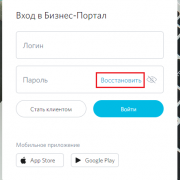Создание заданияcreate a job
Содержание:
- Описание
- Practical skills of SQL language
- Practical skills of SQL language
- Practical skills of SQL language
- Вопрос 1. Уровень: Junior
- Practical skills of SQL language
- SQL syntax used
- Practical skills of SQL language
- SQL syntax used
- SQL syntax used
- Practical skills of SQL language
- Формат
- SQL syntax used
- Условия
- Эпилог
- SQL syntax used
Описание
21 век — век информации. Она окружает нас везде: дома, на работе, в машине, в метро. Информация хранится в базах данных в удобном для компьютера виде. Какие бы приложения вы не тестировали: десктопные, веб или мобильные, банковские системы или игры — вам нужно будет получать информацию из базы данных. Для этого используют специальный язык запросов — SQL (Structure Query Language). Базовые знания SQL сейчас требуют даже на вакансию джуниор-тестировщика.
Тренинг рассчитан на людей, знакомых с основами тестирования и желающих научиться работе с базами данных. Мы расскажем, как устроена база данных, как в ней хранятся данные и как их получать, начиная с самых простых запросов к одной таблице. Те, кто самостоятельно начинал знакомиться с SQL смогут структурировать свои знания, узнать об особенностях работы с разными СУБД и повысить мастерство написания сложных запросов к нескольким таблицам, используя внешние объединения по любым условиям.
На тренинге вы научитесь применять SQL в различных аспектах тестирования — для поиска интересных для проверки кейсов в БД, для разбиения данных на классы эквивалентности в зависимости от типа, с которым данные хранятся в БД, поймете, какие стандартные ошибки делают программисты при подготовке запросов, научитесь добавлять нужные значения в существующие таблицы и создавать новые. После курса вы сможете писать запросы любой сложности к одной, двум и десятку таблиц с использованием джойнов, группировок и подзапросов.
Программа тренинга
Лекция 0 — Вводная. Строение баз данных и организационные вопросы.
- Структура тренинга и орг.вопросы.
- Основы устройства реляционных БД
- Общие сведения про SQL:
- Определение, отличие от других языков.
- История создания SQL
- Стандарты языка SQL, их плюсы и минусы
Модуль I
Лекция 1 — Исследование БД и структура запроса SELECT.
- Установка Oracle XE и SQL Workbench
- Структура запроса Select
- Простейшие запросы к одной таблице
- Понятие схемы пользователя
- Исследование БД с помощью служебных таблиц
- Применение знаний о структуре БД к тестированию
- Работа с ошибками при составлении запроса
Лекция 2 — Типы данных, применяемые в SQL
- Типы для хранения чисел.
- Типы данных для хранения строк
- Типы данных для хранения дат и времени
- Специальные типы данных для хранения xml, идентификаторов и объектов.
- Типичные ошибки, выявляемые для разных типов данных при тестировании
Модуль II
Лекция 3 — Выбор данных из одной таблицы с разными условиями
- Задание условий для разных типов данных: числа, даты, строки в разной кодировке.
- Условие LIKE и использование регулярных выражений в функции regexp_like
- Значение NULL и работа с ним в запросе. Функция NVL
- Функции конвертации типов данных
- Объединение условий
Лекция 4 — Выбор данных из одной таблицы с разными условиями
- Функции, применяемые для разных типов данных
- Работа с датами и временем
Модуль III
Лекция 5 — Выбор данных из нескольких таблиц
- Объединение таблиц в запросе через where
- Разные типы JOIN
- Отличия задания условий через Where и Join
- Задание псевдонимов для таблиц
Лекция 6 — Примеры решения сложных задач на объединение нескольких таблиц
- Объединение таблиц по неравенству
- Объединение таблицы с самой собой
- Типы сортировки
- Сортировка колонок, содержащих значения NULL
- Возможные ошибки приложений при добавлении сортировки
Модуль IV
Лекция 7 — Запросы с подзапросами
- Работа с операторами In и Exist
- Использование подзапросов
Лекция 8 — Работа с результатами запроса
- Вывод уникальных значений через DISTINCT
- Объединение и пересечение результатов. Union, union all, intersect, minus
- Условный вывод данных с помощью оператора CASE
Модуль V
Лекция 9 — Запросы для анализа данных и подготовки отчетов
- Операции над выбираемыми данными
- Группировка данных. Запросы с GROUP BY и HAVING.
- Отбор значимых для тестирования данных.
Лекция 10 — Изменение данных
- Оператор Update
- Операторы TCL — commit и rollback
- Понятие ограничений и работа с ними
Модуль VI
Лекция 11 — Вставка и удаление данных
- Оператор Insert
- Оператор Delete
Лекция 12 — Работа со структурой БД и управление правами доступа
- Основные операторы DCL. Управление правами доступа
- Основные операторы DDL. Задание и изменение структуры БД.
Practical skills of SQL language
This site will help everyone to gain or improve skills in building
SQL Data Manipulation Language statements. To train You will have to build yourself
the SQL statements for retrieval or modification of specific data required in the exercises.
When Your query is incorrect, You will be able to see rows returned by the correct
query along with that returned by Your query. Furthermore, you may execute arbitrary
DML statements on available databases by setting the «Without checking» option. There are
five levels of difficulty (from 1 to 5), You may see it in second column of
exercises list. We propose the exercises on retrieving data (SELECT statement) and
the exercises on modifying data (INSERT, UPDATE, DELETE, and MERGE statements). Your success in the solving the exercises are shown by a rating of participants.
As this takes place, there are three stages:
the first one (first 5 exercises) is performed without time control for an individual
exercise, the second one (begins with the exercise #6) controls time for completion of each
task. At the third stage which refers to optimizing and begins with exercise #139, it is required not only to solve an exercise correctly, but also time of execution of inquiry should be commensurable with time of execution of the author’s solution.
Exercises of the first stage are available without registration and may be solved
in any order You like. The solution of the rest of exercises requires registration.
REGISTRATION IS FREE as this for all other services of the site. In the third column of exercises list You
will be able to see («OK») notes with the numbers of done exercises, but that
is available only to the registered users. In fact, that is the main reason for registration.
If You would like to visit our web site again, You won’t have to recollect which
exercises You have done already and which You haven’t. If You don’t want to register,
You may enter as a guest, but in that case Your results won’t
be traced by the system. Registered users also may discuss the solutions to exercises in our forum.
NOTE: The query stated incorrectly may return the «correct» data on a current state of database.
For this reason You should not be surprised if the results of incorrect query are
coincide with the results of right one with Your query is estimated as incorrect by the Verifying system.
NOTE: Your browser should support Cookies and Javascript to provide correct usage of this site. If you use content filter, it should allow opening child windows to explore help pages.
Practical skills of SQL language
This site will help everyone to gain or improve skills in building
SQL Data Manipulation Language statements. To train You will have to build yourself
the SQL statements for retrieval or modification of specific data required in the exercises.
When Your query is incorrect, You will be able to see rows returned by the correct
query along with that returned by Your query. Furthermore, you may execute arbitrary
DML statements on available databases by setting the «Without checking» option. There are
five levels of difficulty (from 1 to 5), You may see it in second column of
exercises list. We propose the exercises on retrieving data (SELECT statement) and
the exercises on modifying data (INSERT, UPDATE, DELETE, and MERGE statements). Your success in the solving the exercises are shown by a rating of participants.
As this takes place, there are three stages:
the first one (first 5 exercises) is performed without time control for an individual
exercise, the second one (begins with the exercise #6) controls time for completion of each
task. At the third stage which refers to optimizing and begins with exercise #139, it is required not only to solve an exercise correctly, but also time of execution of inquiry should be commensurable with time of execution of the author’s solution.
Exercises of the first stage are available without registration and may be solved
in any order You like. The solution of the rest of exercises requires registration.
REGISTRATION IS FREE as this for all other services of the site. In the third column of exercises list You
will be able to see («OK») notes with the numbers of done exercises, but that
is available only to the registered users. In fact, that is the main reason for registration.
If You would like to visit our web site again, You won’t have to recollect which
exercises You have done already and which You haven’t. If You don’t want to register,
You may enter as a guest, but in that case Your results won’t
be traced by the system. Registered users also may discuss the solutions to exercises in our forum.
NOTE: The query stated incorrectly may return the «correct» data on a current state of database.
For this reason You should not be surprised if the results of incorrect query are
coincide with the results of right one with Your query is estimated as incorrect by the Verifying system.
NOTE: Your browser should support Cookies and Javascript to provide correct usage of this site. If you use content filter, it should allow opening child windows to explore help pages.
Practical skills of SQL language
This site will help everyone to gain or improve skills in building
SQL Data Manipulation Language statements. To train You will have to build yourself
the SQL statements for retrieval or modification of specific data required in the exercises.
When Your query is incorrect, You will be able to see rows returned by the correct
query along with that returned by Your query. Furthermore, you may execute arbitrary
DML statements on available databases by setting the «Without checking» option. There are
five levels of difficulty (from 1 to 5), You may see it in second column of
exercises list. We propose the exercises on retrieving data (SELECT statement) and
the exercises on modifying data (INSERT, UPDATE, DELETE, and MERGE statements). Your success in the solving the exercises are shown by a rating of participants.
As this takes place, there are three stages:
the first one (first 5 exercises) is performed without time control for an individual
exercise, the second one (begins with the exercise #6) controls time for completion of each
task. At the third stage which refers to optimizing and begins with exercise #139, it is required not only to solve an exercise correctly, but also time of execution of inquiry should be commensurable with time of execution of the author’s solution.
Exercises of the first stage are available without registration and may be solved
in any order You like. The solution of the rest of exercises requires registration.
REGISTRATION IS FREE as this for all other services of the site. In the third column of exercises list You
will be able to see («OK») notes with the numbers of done exercises, but that
is available only to the registered users. In fact, that is the main reason for registration.
If You would like to visit our web site again, You won’t have to recollect which
exercises You have done already and which You haven’t. If You don’t want to register,
You may enter as a guest, but in that case Your results won’t
be traced by the system. Registered users also may discuss the solutions to exercises in our forum.
NOTE: The query stated incorrectly may return the «correct» data on a current state of database.
For this reason You should not be surprised if the results of incorrect query are
coincide with the results of right one with Your query is estimated as incorrect by the Verifying system.
NOTE: Your browser should support Cookies and Javascript to provide correct usage of this site. If you use content filter, it should allow opening child windows to explore help pages.
Вопрос 1. Уровень: Junior
Есть категория «хитрых» вопросов, которые особенно любят задавать Junior-специалистам. Хотя чего уж там, любым специалистам.
Один из таких видов — вопросы по темам, на которые в повседневной жизни не обращаешь внимания и о которых не задумываешься. Просто делаешь на автомате, а на собеседовании это стреляет. Ну или на проекте, когда код начинает работать неправильно. Но это другая история…
Вопрос: Как оператор обрабатывает поля с NULL?
Если Вы не знаете ответ на этот вопрос, то после прочтения ответа обязательно проверьте свои проекты — может у вас где-то закралась ошибка?
Учитывая, что NULL в SQL — просто отсутствие значения, то все значения NULL при группировке попадают в одну группу. Например, пусть есть таблица:
Тогда запрос даст:
Practical skills of SQL language
This site will help everyone to gain or improve skills in building
SQL Data Manipulation Language statements. To train You will have to build yourself
the SQL statements for retrieval or modification of specific data required in the exercises.
When Your query is incorrect, You will be able to see rows returned by the correct
query along with that returned by Your query. Furthermore, you may execute arbitrary
DML statements on available databases by setting the «Without checking» option. There are
five levels of difficulty (from 1 to 5), You may see it in second column of
exercises list. We propose the exercises on retrieving data (SELECT statement) and
the exercises on modifying data (INSERT, UPDATE, DELETE, and MERGE statements). Your success in the solving the exercises are shown by a rating of participants.
As this takes place, there are three stages:
the first one (first 5 exercises) is performed without time control for an individual
exercise, the second one (begins with the exercise #6) controls time for completion of each
task. At the third stage which refers to optimizing and begins with exercise #139, it is required not only to solve an exercise correctly, but also time of execution of inquiry should be commensurable with time of execution of the author’s solution.
Exercises of the first stage are available without registration and may be solved
in any order You like. The solution of the rest of exercises requires registration.
REGISTRATION IS FREE as this for all other services of the site. In the third column of exercises list You
will be able to see («OK») notes with the numbers of done exercises, but that
is available only to the registered users. In fact, that is the main reason for registration.
If You would like to visit our web site again, You won’t have to recollect which
exercises You have done already and which You haven’t. If You don’t want to register,
You may enter as a guest, but in that case Your results won’t
be traced by the system. Registered users also may discuss the solutions to exercises in our forum.
NOTE: The query stated incorrectly may return the «correct» data on a current state of database.
For this reason You should not be surprised if the results of incorrect query are
coincide with the results of right one with Your query is estimated as incorrect by the Verifying system.
NOTE: Your browser should support Cookies and Javascript to provide correct usage of this site. If you use content filter, it should allow opening child windows to explore help pages.
SQL syntax used
User’s queries are executed by SQL server that brings some limitations to the
syntax of SQL statements. Now we use Microsoft SQL Server 2019 (15.0) on the rating stages,
and MariaDB-10.4 (compatible with MySQL 8), PostgreSQL 12.3, and Oracle Database 11g on the learn stage in addition. That is why You should follow
the syntax of these realizations when building queries. It should be noted that SQL syntax,
implemented in Microsoft SQL Server, is close to that of SQL-92 standard. But there are some
distinctions, among them is absence of NATURAL JOIN of tables. Supplied help on SQL Data Manipulation Language is held in accordance
with SQL-92 standard and contains information necessary for solving the exercises. In the same place it is possible to find features of used realization (SQL Server 2005).
Practical skills of SQL language
This site will help everyone to gain or improve skills in building
SQL Data Manipulation Language statements. To train You will have to build yourself
the SQL statements for retrieval or modification of specific data required in the exercises.
When Your query is incorrect, You will be able to see rows returned by the correct
query along with that returned by Your query. Furthermore, you may execute arbitrary
DML statements on available databases by setting the «Without checking» option. There are
five levels of difficulty (from 1 to 5), You may see it in second column of
exercises list. We propose the exercises on retrieving data (SELECT statement) and
the exercises on modifying data (INSERT, UPDATE, DELETE, and MERGE statements). Your success in the solving the exercises are shown by a rating of participants.
As this takes place, there are three stages:
the first one (first 5 exercises) is performed without time control for an individual
exercise, the second one (begins with the exercise #6) controls time for completion of each
task. At the third stage which refers to optimizing and begins with exercise #139, it is required not only to solve an exercise correctly, but also time of execution of inquiry should be commensurable with time of execution of the author’s solution.
Exercises of the first stage are available without registration and may be solved
in any order You like. The solution of the rest of exercises requires registration.
REGISTRATION IS FREE as this for all other services of the site. In the third column of exercises list You
will be able to see («OK») notes with the numbers of done exercises, but that
is available only to the registered users. In fact, that is the main reason for registration.
If You would like to visit our web site again, You won’t have to recollect which
exercises You have done already and which You haven’t. If You don’t want to register,
You may enter as a guest, but in that case Your results won’t
be traced by the system. Registered users also may discuss the solutions to exercises in our forum.
NOTE: The query stated incorrectly may return the «correct» data on a current state of database.
For this reason You should not be surprised if the results of incorrect query are
coincide with the results of right one with Your query is estimated as incorrect by the Verifying system.
NOTE: Your browser should support Cookies and Javascript to provide correct usage of this site. If you use content filter, it should allow opening child windows to explore help pages.
SQL syntax used
User’s queries are executed by SQL server that brings some limitations to the
syntax of SQL statements. Now we use Microsoft SQL Server 2019 (15.0) on the rating stages,
and MariaDB-10.4 (compatible with MySQL 8), PostgreSQL 12.3, and Oracle Database 11g on the learn stage in addition. That is why You should follow
the syntax of these realizations when building queries. It should be noted that SQL syntax,
implemented in Microsoft SQL Server, is close to that of SQL-92 standard. But there are some
distinctions, among them is absence of NATURAL JOIN of tables. Supplied help on SQL Data Manipulation Language is held in accordance
with SQL-92 standard and contains information necessary for solving the exercises. In the same place it is possible to find features of used realization (SQL Server 2005).
SQL syntax used
User’s queries are executed by SQL server that brings some limitations to the
syntax of SQL statements. Now we use Microsoft SQL Server 2019 (15.0) on the rating stages,
and MariaDB-10.4 (compatible with MySQL 8), PostgreSQL 12.3, and Oracle Database 11g on the learn stage in addition. That is why You should follow
the syntax of these realizations when building queries. It should be noted that SQL syntax,
implemented in Microsoft SQL Server, is close to that of SQL-92 standard. But there are some
distinctions, among them is absence of NATURAL JOIN of tables. Supplied help on SQL Data Manipulation Language is held in accordance
with SQL-92 standard and contains information necessary for solving the exercises. In the same place it is possible to find features of used realization (SQL Server 2005).
Practical skills of SQL language
This site will help everyone to gain or improve skills in building
SQL Data Manipulation Language statements. To train You will have to build yourself
the SQL statements for retrieval or modification of specific data required in the exercises.
When Your query is incorrect, You will be able to see rows returned by the correct
query along with that returned by Your query. Furthermore, you may execute arbitrary
DML statements on available databases by setting the «Without checking» option. There are
five levels of difficulty (from 1 to 5), You may see it in second column of
exercises list. We propose the exercises on retrieving data (SELECT statement) and
the exercises on modifying data (INSERT, UPDATE, DELETE, and MERGE statements). Your success in the solving the exercises are shown by a rating of participants.
As this takes place, there are three stages:
the first one (first 5 exercises) is performed without time control for an individual
exercise, the second one (begins with the exercise #6) controls time for completion of each
task. At the third stage which refers to optimizing and begins with exercise #139, it is required not only to solve an exercise correctly, but also time of execution of inquiry should be commensurable with time of execution of the author’s solution.
Exercises of the first stage are available without registration and may be solved
in any order You like. The solution of the rest of exercises requires registration.
REGISTRATION IS FREE as this for all other services of the site. In the third column of exercises list You
will be able to see («OK») notes with the numbers of done exercises, but that
is available only to the registered users. In fact, that is the main reason for registration.
If You would like to visit our web site again, You won’t have to recollect which
exercises You have done already and which You haven’t. If You don’t want to register,
You may enter as a guest, but in that case Your results won’t
be traced by the system. Registered users also may discuss the solutions to exercises in our forum.
NOTE: The query stated incorrectly may return the «correct» data on a current state of database.
For this reason You should not be surprised if the results of incorrect query are
coincide with the results of right one with Your query is estimated as incorrect by the Verifying system.
NOTE: Your browser should support Cookies and Javascript to provide correct usage of this site. If you use content filter, it should allow opening child windows to explore help pages.
Формат
12 занятий (9 часов теории) + много практических заданий для самостоятельной работы + постоянные консультации тренера в чате.
Обучение происходит следующим образом:
Раз в неделю по понедельникам до 12.00 по Московскому времени выкладываются теоретические лекции, ссылки на дополнительные материалы, домашняя работа.
Теоретическую информацию можно посмотреть в любое удобное время.
Помимо теоретической части, вас также ждут практические домашние задания, которые тщательно проверяются тренером. После проверки практических заданий Вы получаете оценку и подробный комментарий по своей работе и при необходимости советы по доработке. По результатам комментариев тренера Вы можете переделать домашнюю работу и улучшить свою оценку.
Общение участников курса и тренеров проходит и в телеграм-чате учебной группы, где можно задавать вопросы тренеру и при желании общаться с другими участниками учебной группы. Каждый день тренер будет доступен в телеграм-чате и каждый день будет отвечать на вопросы, Вы можете задавать вопросы по теоретическому материалу или домашней работе, как только они у вас возникают.
Все выпускники, успешно сдавшие домашние задания, получают сертификат.
SQL syntax used
User’s queries are executed by SQL server that brings some limitations to the
syntax of SQL statements. Now we use Microsoft SQL Server 2019 (15.0) on the rating stages,
and MariaDB-10.4 (compatible with MySQL 8), PostgreSQL 12.3, and Oracle Database 11g on the learn stage in addition. That is why You should follow
the syntax of these realizations when building queries. It should be noted that SQL syntax,
implemented in Microsoft SQL Server, is close to that of SQL-92 standard. But there are some
distinctions, among them is absence of NATURAL JOIN of tables. Supplied help on SQL Data Manipulation Language is held in accordance
with SQL-92 standard and contains information necessary for solving the exercises. In the same place it is possible to find features of used realization (SQL Server 2005).
Условия
Стоимость участия для физических лиц: 13 000 рублей за весь курс.
Стоимость участия для юридических лиц: 15 500 рублей за весь курс за одного участника. При регистрации от 3-х участников на один курс действует 15% скидка.
Информация для физических лиц
Организатор мероприятия: ИП Абдюшев Павел Рашитович, ИНН 503500793903, ОГРНИП 317505300051323
Услуги оказываются на основании публичного договора оферты. Ознакомиться с договором можно ЗДЕСЬ.
Все реквизиты для оплаты вы получите на почту после того, как нажмете кнопку справа Записаться и заполните все поля. Если Вы не получили письмо в течение рабочего дня, просто отправьте сообщение на trainings@software-testing.ru
Если у Вас есть какие-то вопросы, их можно задать по адресу указанному выше.
Информация для юридических лиц:
По вопросам оформления договора и выставления счета на оплату обращайтесь по адресу trainings@software-testing.ru
Обратите внимание, что при постоплате стоимость тренинга увеличивается на 25%
Эпилог
Мы разобрали с вами всего 5 возможных заданий, которые судьба и рекрутеры могут подкинуть вам на собеседовании. Однако, вариантов, на самом деле, масса. И чтобы реально подготовиться к собеседованию, нужно нарешать как можно больше задач, понять и прочувствовать теоретические аспекты и буквально научиться «мыслить на SQL». Именно на это и нацелена программа SQL Interview — так что будем рады помочь вам получить работу мечты!
И, помимо этого, не забывайте: SQL — чисто прикладной инструмент. Чтобы его освоить, нужно практиковаться, практиковаться и практиковаться. Выучить его можно буквально за несколько недель интенсивных занятий, а вот освоить на уровне Senior… порой на это уходят годы.
SQL syntax used
User’s queries are executed by SQL server that brings some limitations to the
syntax of SQL statements. Now we use Microsoft SQL Server 2019 (15.0) on the rating stages,
and MariaDB-10.4 (compatible with MySQL 8), PostgreSQL 12.3, and Oracle Database 11g on the learn stage in addition. That is why You should follow
the syntax of these realizations when building queries. It should be noted that SQL syntax,
implemented in Microsoft SQL Server, is close to that of SQL-92 standard. But there are some
distinctions, among them is absence of NATURAL JOIN of tables. Supplied help on SQL Data Manipulation Language is held in accordance
with SQL-92 standard and contains information necessary for solving the exercises. In the same place it is possible to find features of used realization (SQL Server 2005).









